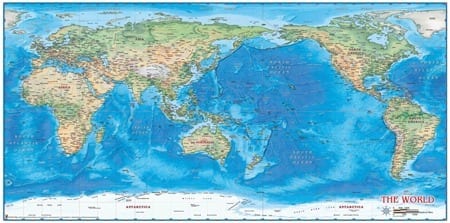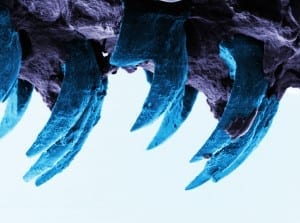
via militaryaerospace.com
Anti-submarine warfare (ASW) efforts face a militarily resurgent Russia, a strengthening China, and proliferating quiet diesel-electric submarines that could shift the global naval balance of power.
During the last five days of October 1962, U.S. Navy warships, guided by surface, sub-surface, and airborne anti-submarine warfare (ASW) sensor data, launched numerous practice depth charges at Soviet submarines violating the Cuban Missile Crisis blockade. The actions were in accordance with the “Submarine Surfacing and Identification Procedures” released earlier that month.
ASW technology at the time included AN/SSQ-23 Julie, AN/SSQ-57B LOFAR (Low Frequency Acquisition and Ranging), and AN/SSQ-28 Jezebel sonobuoys, magnetic anomaly detection (MAD), radar, SQS-26 sonar, and SOSUS (Sound Surveillance System).
The Soviet submarines were seen as a threat to U.S. ships enforcing the blockade and as possible transports for nuclear warheads. The threat was considered so significant that Attorney General Robert Kennedy said “the President ordered the Navy to give highest priority to tracking the submarines and to put into effect the greatest possible safety measures to protect our own aircraft carriers and other vessels.”
On the other side, Soviet Premier Nikita Khrushchev warned a visiting American businessman that Soviet submarines would attack any American ship that stopped a Soviet ship.
Despite having received a copy of U.S. naval orders limiting “signaling” to practice depth charges, many Soviet submariners believed they were under real attack. That misunderstanding was compounded by American military belief that all Soviet subs in the area were armed only with conventional weapons. It was not known until decades later that Soviet submarine commanders were under orders to launch nuclear-tip-ped torpedoes against any U.S. warship trying to force them to surface-and two captains ordered those weapons assembled and prepared for launch before deciding to stand down.
It was the greatest exercise of ASW technologies and capabilities since the end of World War II and the last time the U.S. Navy used force (even if only practice depth charges) against a foreign submarine.
Cold War legacy
While ASW was a major element in the Cold War, other than the Cuban blockade, it was in the form of “hide-and-seek” engagements between the U.S. and Soviet navies. With the collapse of the Soviet Union and end of the Cold War three decades later, the U.S. became the world’s only superpower, facing no adversarial blue-water navy.
That began to change in the 21st Century with dramatic increases in Chinese military spending (building a major submarine force as part of its evolving blue water fleet), the re-emergence of aggressive Russian military activity (building new submarines), hostile actions by the North Korean navy (and its small fleet of small subs), and even the broad use of “semi-submersibles” by Latin American drug cartels.
Read more: Sonar technology comes to grips with dangerous new era
The Latest on: Anti-submarine warfare
[google_news title=”” keyword=”Anti-submarine warfare” num_posts=”10″ blurb_length=”0″ show_thumb=”left”]
via Google News
The Latest on: Anti-submarine warfare
- Why Did Seawolf-Class Submarine USS Connecticut Slam Into an Underwater Mountain?on April 26, 2024 at 12:34 pm
Three years ago, the Connecticut was prowling the depths of that sea, operating very near to the advanced Chinese naval submarine base on Hainan Island. Then, tragedy struck.
- Dive into submarine warfare cinema with these filmson April 26, 2024 at 4:50 am
Das Boot, directed by Wolfgang Petersen, is a German film that authentically captures World War II submarine warfare. Following the U-96 crew, it portrays the intense physical confinement and ...
- Why the US will stay dominant in undersea warfareon April 25, 2024 at 3:38 pm
A number of commentators in Australia have lately made rash pronouncements about the demise of US submarines, alleging that innovative technologies will make the vessels vulnerable. Others have been ...
- HII delivers Virginia class submarine USS New Jersey to Navyon April 25, 2024 at 7:47 am
According to a PR published by HII on April 25, 2024, the company confirmed that its Newport News Shipbuilding division has officially handed over the Virginia-class fast-attack submarine, named New ...
- The 112-Year-Old Russian Navy Vessel Ukraine Just Hit with Anti-Ship Missileson April 24, 2024 at 8:11 am
The Russian salvage ship Kommuna has been in service since 1915, when Tsar Nicholas II ruled the Russian Empire.
- Northrop Grumman's Manta Ray Could Change Undersea Warfare Foreveron April 23, 2024 at 10:20 am
A new class of UUV, it is an extra-large glider that will operate long-duration, long-range and payload-capable undersea missions without need for on-site human logistics.” ...
- Russia's Akula II-Class Submarine Is One of the Most Dangerous on Earthon April 19, 2024 at 4:41 am
Summary: The Akula-II class submarine, a key component of the Russian Navy's fleet, remains a formidable asset despite the broader challenges faced by Russia in Ukraine. -Known for their stealth due ...
- Rite-Solutions awarded a $10.7 million task order to support the development of electronic warfare and electronic support trainerson April 17, 2024 at 2:11 pm
Middletown-based Rite-Solutions has been awarded a five-year, $10.7 million competitive Task Order from the Naval Undersea Warfare Center (NUWC), Division Newport to provide hardware and software ...
- Taiwan's military submarine program to proceed after resignation of project chiefon April 17, 2024 at 4:28 am
Taiwan's indigenous submarine program remains on course despite the resignation of its leader, Huang Shu-kuang, who cited unfair criticism against him and the military.
- Journalists given rare access to France’s Rubis-class nuclear-powered submarineon April 17, 2024 at 3:40 am
Journalists were granted rare access to one of France’s Rubis-class nuclear-powered submarines as it was being readied for sea in the naval dockyards in Toulon. The French navy’s fleet of ...
via Bing News









